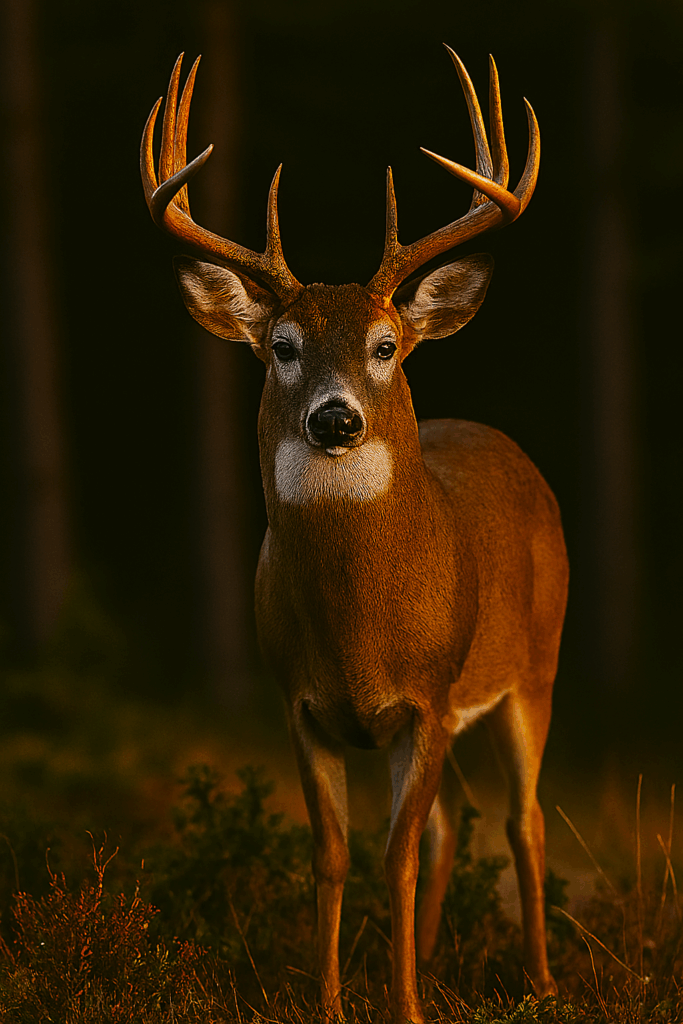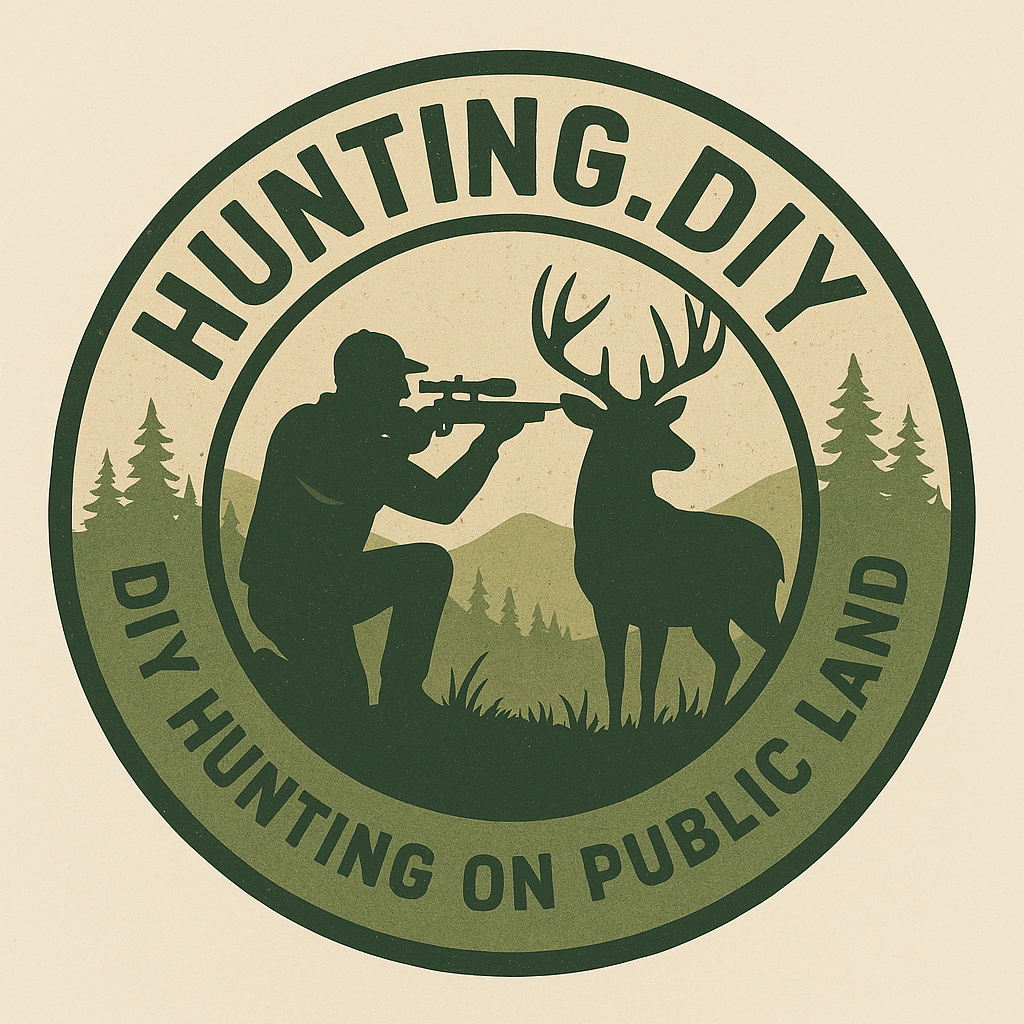Whitetail Deer DIY Hunting Guide & Tips (2025)
Welcome to our whitetail deer hunting guide, your complete resource for mastering the pursuit of America’s most popular big game. Whether you’re a DIY hunter or new to the field, this guide covers proven strategies, expert tips, and essential gear advice to help you achieve success during the 2025 whitetail season.

Species Classification
White-tailed deer (Odocoileus virginianus) belong to the Cervidae family alongside other deer species. They evolved in North America after migrating from Asia during the Pleistocene. Males grow antlers each year; females lack them. This species thrives in a variety of ecosystems, from hardwood forests to farmland edges.
Physical Description
Adult bucks stand about three feet at the shoulder and weigh anywhere from 100 to 300 pounds, depending on region and nutrition. Their coat shifts from reddish-brown in summer to grayish-brown in winter, blending with shadows. The hallmark white under-tail “flag” warns other deer of danger when raised. Bucks sport antlers with anywhere from six to ten points in mature individuals.
Distribution and Habitat
White-tails range from southern Canada through almost every state in the U.S. and down into Central America. They favor edge habitats—where forests meet fields or waterways—because these areas provide cover and browse. On public lands, focus your scouting along transition zones, old logging roads, and creek bottoms where deer bed during midday.
Season Dates and Regulations
Seasons vary by state. In many Midwestern and Eastern states, archery season kicks off in late September, followed by firearm season from mid-October through early December. Some Western states offer late-season muzzleloader or management hunts into January. Always check your state wildlife agency’s website for exact dates, bag limits, and antler-point restrictions before heading out.
Best Hunting Regions
The Midwest—Wisconsin, Illinois, and Iowa—holds some of the densest deer populations in the country. Texas offers massive public hunting units under its Managed Lands Deer Program. In the East, Pennsylvania and New York have robust archery and rifle seasons. In the West, Montana and Colorado provide trophy-class bucks on BLM and National Forest lands.
Hunting Equipment: Gun and Ammo
A .270 Winchester or .30-06 Springfield rifle with a 3–4× scope handles almost any white-tail situation out to 200 yards. For archery, a 50–60 pound draw weight bow and broadheads with at least a 1½-inch cutting diameter ensure quick, ethical kills. Always zero your rifle with the exact ammo you’ll carry; nothing’s worse than a flyer when a mature buck strolls into range.
Hunting Methods and Techniques
Stand hunting over feeding areas is a go-to tactic. Hang a climber stand or ladder stand along the edge of a food plot or agricultural field. For more mobile hunters, spot-and-stalk during early morning or late afternoon when deer feed in open areas. Use natural cover—hedgerows, fallen logs, cattail thickets—to stay concealed. Scent control is mandatory; pack a windchecker and always approach from downwind.
Licenses and Tags
Every state requires a hunting license plus species-specific deer tag or permit. Some regions sell limited-entry or lottery tags for premium hunts, while general-season deer tags are usually available over the counter. Carry proof of hunter education certification if required. Fill out your tag immediately after a kill and follow tagging rules to the letter.
Diet and Feeding
White-tails are browsers, feeding on a diet of twigs, buds, forbs, mast (acorns), and agricultural crops. In spring and summer they favor tender green leaves and wildflowers. In fall they switch to acorns and corn, piling on fat for winter. Scouting feeding patterns and setting up near oak flats or standing cornfields can yield trophy prospects.
Reproduction and Life Cycle
Breeding season—known as the rut—peaks from late October through November in most northern states. Bucks rub trees and scrape soil to mark territories and attract does. Does usually bear one to three fawns in May or June. Young bucks disperse in autumn, which can offer opportunities to intercept cruising yearlings near funnels between bedding and feeding areas.
Population Status
White-tails are generally abundant, thanks to decades of effective wildlife management and habitat improvements. However, localized declines can occur due to overharvest or habitat loss. Many state agencies monitor herd density through spotlight counts and hunter surveys to set sustainable harvest limits.
Meat Quality and Processing
Venison from white-tails is lean, tender, and mild-flavored. Field dress your deer ASAP and cool the carcass quickly by quartering and removing hide. Bone out meat within 24 hours. Aging quarters in a cool environment for 48–72 hours can improve tenderness. Grind trim for burgers or backstrap for steaks to maximize flavor and texture.
Safety Considerations
Always treat every firearm or bow as if it’s loaded. Wear blaze orange during firearm seasons; at a minimum, don’t rely on a single vest—add an orange hat. Communicate your stand location to a hunting partner and file a trip plan with someone at home. Keep a first-aid kit, whistle, and emergency blanket in your pack.
Tracks and Sign
White-tail tracks are heart-shaped with two pointed toes approximately 2–3 inches long. Scrapes—where bucks paw and bite branches—are classic rut sign beneath rub lines on saplings. Bedding areas typically have flattened grass or leaf litter under dense cover. Fresh droppings shaped like bean pods often mark travel corridors.
Similar Species
Mule deer can overlap with white-tails in western states. Unlike mule deer, white-tails have a single-beamed antler with several tines branching upward, while mule deer antlers fork. Mule deer ears are also noticeably larger. Their tracks are more oval, with straighter toes. Avoid misidentification to ensure legal harvest and accurate reporting.
Embark on your solo hunt with confidence: scout public ground hard, carry reliable gear, and read deer sign like a pro. That buck you’ve been dreaming of is out there—make it yours.
